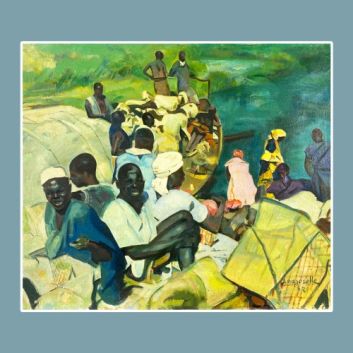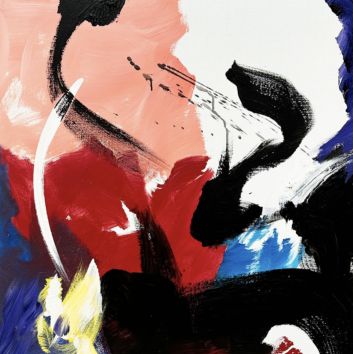Rating and value of paintings by Georges Rouault
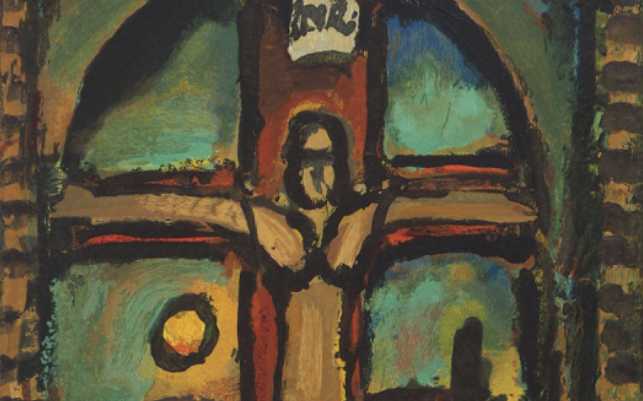
If you own a work by or based on the artist Geroges Rouault and would like to know its value, our state-approved experts and auctioneers can help you.
Our specialists will carry out a free appraisal of your work, and provide you with a precise estimate of its current market value.
Then, if you want to sell your work, we'll point you in the right direction to get the best possible price for it.
Artist's rating and value
An important Fauvist and Expressionist artist of the twentieth century, Georges Rouault enjoys a high and growing standing on the auction market. Uncommon in auction rooms, Rouault's paintings attract a large number of collectors, particularly landscape enthusiasts.
The price at which his works are sold ranges from €20 to €255,000, a substantial delta but one that speaks volumes about the value that can be attributed to the artist's works. A case in point is his oil on canvas Intérieur d'église, which sold for €963,000 in 2016.
Order of value from the most basic to the most prestigious
Technique used | Results |
|---|---|
Ceramics | From €260 to €79,000 |
Print - multiple | From €10 to €146,000 |
Drawing - watercolor | From €50 to €704,000 |
Paint | From €400 to €1,213,000 |
Response in less than 24h
The artist's works and style
Deeply spiritual and imbued with emotion, Georges Rouault's style is characterized by strong black lines and intense use of color, which almost seem to vibrate from within, giving his compositions a uniquely dramatic force.
Rouault, although often classified as an Expressionist, developed his own pictorial language, shaped by his meticulous training in stained glass technique, which he used to accentuate contrast and luminosity.
This mastery of light, combined with his concern for psychological depth, makes his works visual meditations on human suffering.
His relentless quest for the sacred and his deep religious feeling are evident in every brushstroke. Rouault does not simply seek to represent reality; he aspires to reveal what is most intimate and tragic in the human soul.
His figures, whether sad clowns, merciless judges or silent martyrs, are like mirrors of human misery. Their deliberate distortion, often accentuated by heavy black outlines, reinforces the impression of tormented souls, of characters torn between beauty and pain.
Rouault hijacks the principles of the Fauvists, for whom color bursts freely, and uses it as an instrument of revelation. He doesn't use it for its visual beauty alone, but to accentuate the tragic dimension of the human condition, adding an emotional layer to his compositions.
Each canvas thus becomes a space of confrontation between the sacred and the profane, light and darkness, grace and suffering. Through this omnipresent dramatic tension, his works achieve a singular, almost mystical harmony, where spiritual depth and the brutality of existence meet.
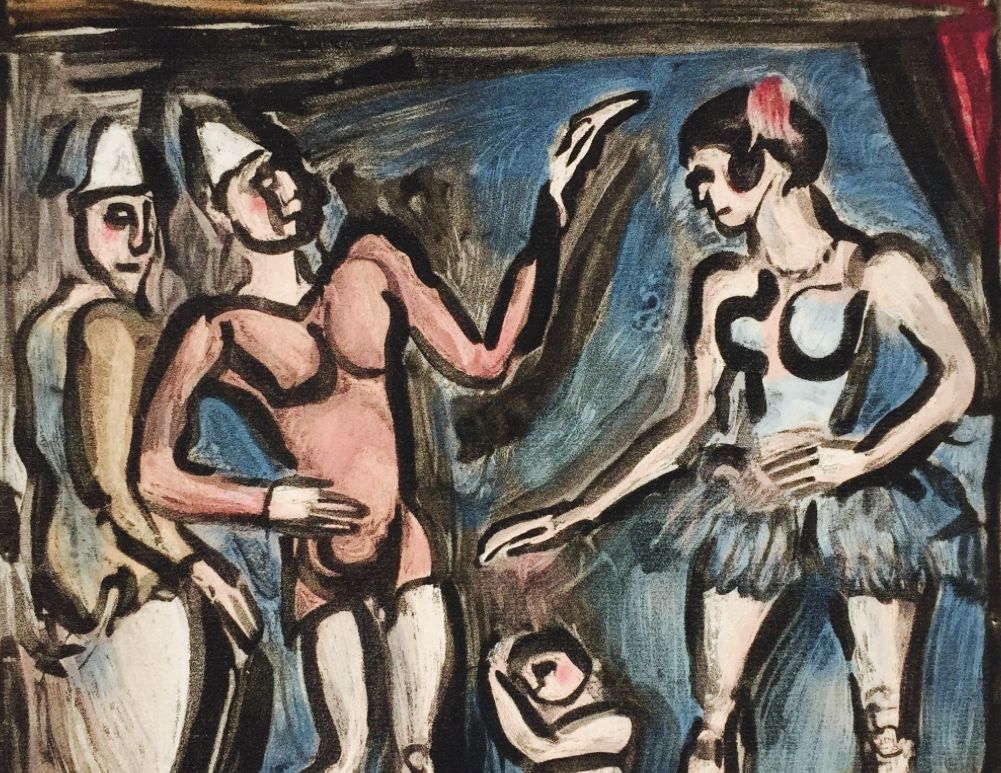
The life of Georges Rouault
Georges Rouault (1871-1958) was a French painter and engraver of the early 20th century. Born into a modest family, he first learned the art of stained glass, an apprenticeship that would have a lasting influence on his work.
Born into a modest family, Rouault was trained in stained glass techniques from an early age, an apprenticeship that would have a lasting influence on his art, particularly in his use of intense colors and thick black outlines, reminiscent of the lead lines in stained glass.
After losing his father, he was raised by his mother, a very pious woman whose religious devotion played a central role in the spiritual orientation of his work. He moved to Paris, where he entered the École des Beaux-Arts and Gustave Moreau's studio.
As with other artists of his generation, Moreau played a crucial role in his artistic training, but died shortly after taking him under his wing.
Gustave Moreau's death in 1898 left a deep imprint on the artist, who plunged further into a reflection on human misery and the sacred.
Rouault met artists such as Charles Camoin and Albert Marquetbut his darker, more introspective approach soon set him apart from his comrades. He borrowed certain color techniques from the Fauvists, while orienting them towards a deeper spiritual quest.
Rouault took part in the major Parisian Salons, notably the Salon d'Automne and the Salon des Indépendants, but turned away from the prevailing artistic fashions. His style, influenced by stained glass, is characterized by thick black outlines and a palette of vivid colors, often in the service of religious or social themes.
Thanks to his dealer Ambroise Vollard, Rouault quickly found an audience. He exhibited not only in France, but also abroad, notably in Germany and the United States. The series of clowns and judges became emblematic of his work, reflecting his tragic vision of the human condition.
His art, imbued with both mysticism and compassion, reveals a unique sensibility that makes him a key figure in twentieth-century art.
#ArtMinute Inside A Modern Vision: Rouault
The importance of religious iconography in Georges Rouault's work
Religious iconography plays a fundamental role in Georges Rouault's work, marking a decisive break in his approach to the human condition. Early on, the artist drew on biblical stories and sacred figures to express his spiritual concerns.
Moving away from simple pious representation, Rouault transforms these themes into powerful symbols, where suffering and redemption become central elements of his work. This was the case for many artists of his time, who updated religious subjects with the aim of rearranging space.
Influenced by his apprenticeship in stained glass, he adopts thick black lines and intense colors to evoke a mystical, almost dramatic atmosphere, underscoring the tension between the sacred and the profane.
The religious figures he paints, whether Christ on the cross or martyrs, are always imbued with deep emotion, revealing human vulnerability while questioning notions of justice and grace. His work also questions the role of religious subjects in modern art.
Indeed, the 20th century marked a real turning point in the reappropriation of religious subjects, which became a reason to reform artists' working methods, and enabled a recomposition of space, a certain return to order.
This process is particularly evident in the creation of contemporary stained glass windows, and the work of Georges Rouault is a striking example of this, which can also be seen in artists such as Jacques Villon, who devoted part of his career to religious subjects.
Although religious iconography is at the heart of his work, Rouault does not use it solely to illustrate scenes of faith. On the contrary, he uses it as a visual language to evoke the ills of society and the torments of the soul.
His characters - often judges, clowns or prostitutes - are modern incarnations of the spiritual struggle, beings in search of meaning in a world in perpetual search of justice.
By placing religious iconography at the center of his artistic production, Georges Rouault offers a unique vision in which the sacred transcends convention and becomes a key to understanding human tragedy.
This approach sets him apart in the history of modern art, making him a key figure in twentieth-century spiritual expression.
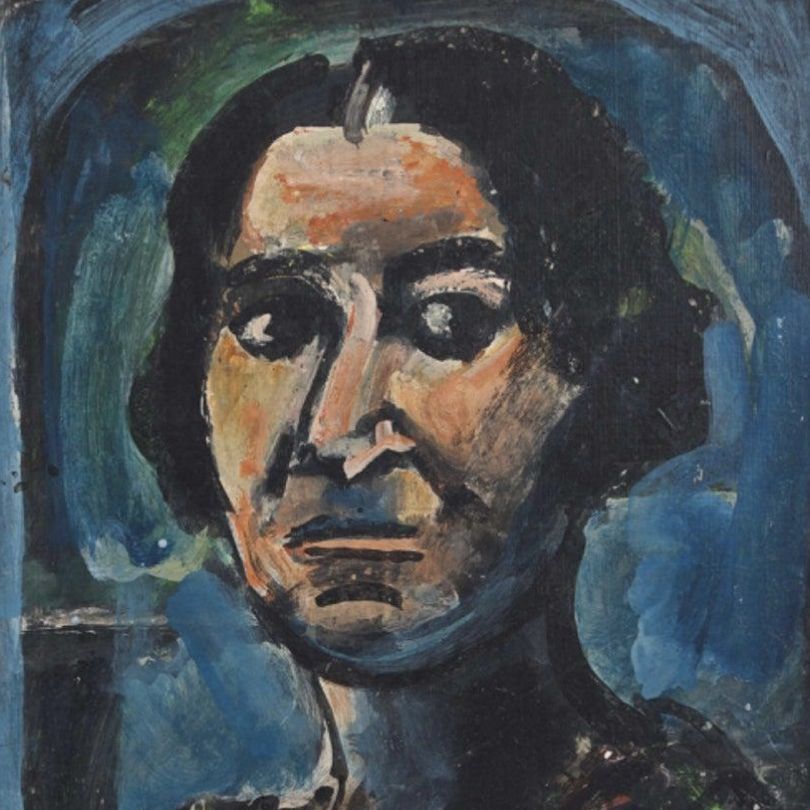
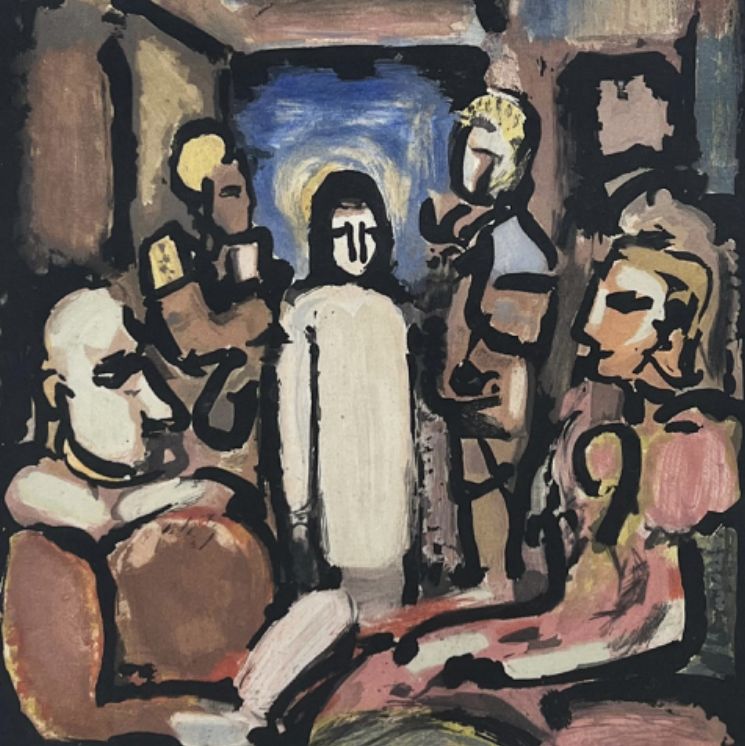
Georges Rouault's influence on his period
Georges Rouault is an artist who left his mark on twentieth-century painting with his unique approach and spiritual vision. He produced a vast and intense body of work.
Some of his works are held in prestigious museums in France and abroad, but most of his paintings are owned by private collectors - who regularly reintroduce them on the auction market.
Far from limiting himself to a single aesthetic, Rouault explores profound themes such as suffering, the quest for redemption and the human condition, transforming his characters into powerful symbols of existence.
His technique, characterized by pronounced black outlines and vibrant colors, enables him to create an emotionally charged atmosphere that always resonates strongly with viewers.
Rouault's impact extends far beyond his period, influencing generations of artists who followed him. His works continue to inspire admiration and questioning, making him a key figure in modern art.
His signature
Not all of Georges Rouault's works are signed, and there are many forgeries.
Although there are variations, here is a first example of its signature:
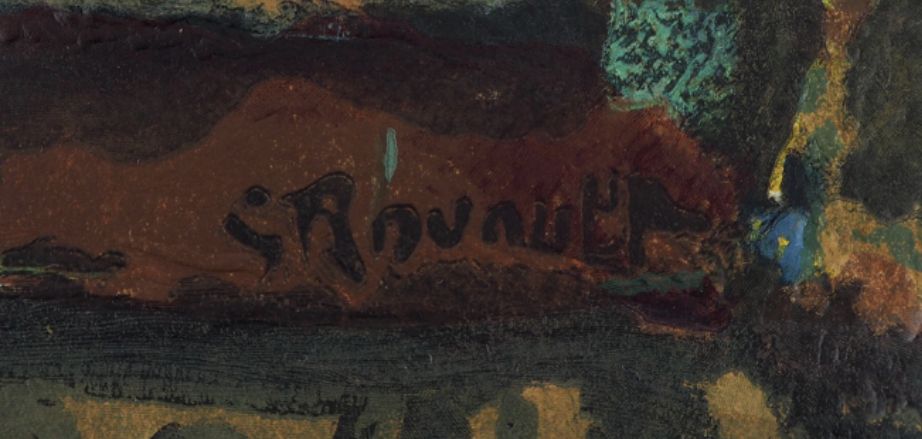
Appraising your property
If you own a work by Georges Rouault, don't hesitate to request a free appraisal by filling in our online form.
A member of our team of experts and certified auctioneers will contact you to provide an estimate of the market value of your work.
If you are considering selling your work, our specialists will also guide you through the various alternatives available to obtain the best possible price, taking into account market trends and the specific features of each work.
Response in less than 24h
Related topics

Rating and value of works, lithographs, paintings by Pier...
Pierre Soulages, master of informal painting and outrenoir, produced lithographs and paintings that are highly prized at auction.
Read more >
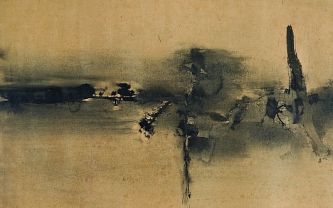
Rating and value 2024 of Vasu's paintings, drawings and...
Vasudeo Gaintonde is a twentieth-century Indian abstract painter whose works are highly valued at auction.
Read more >
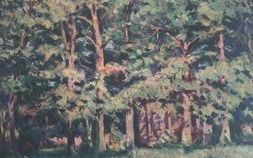
Cote et valeur 2024 des tableaux, dessins, peintures de Eugè...
Eugène Alluaud is a painter of the Crozant school who produced works that have achieved a stable price and value at auction. Estimate in 24h
Read more >
Secure site, anonymity preserved
State-approved auctioneer and expert
Free, certified estimates
